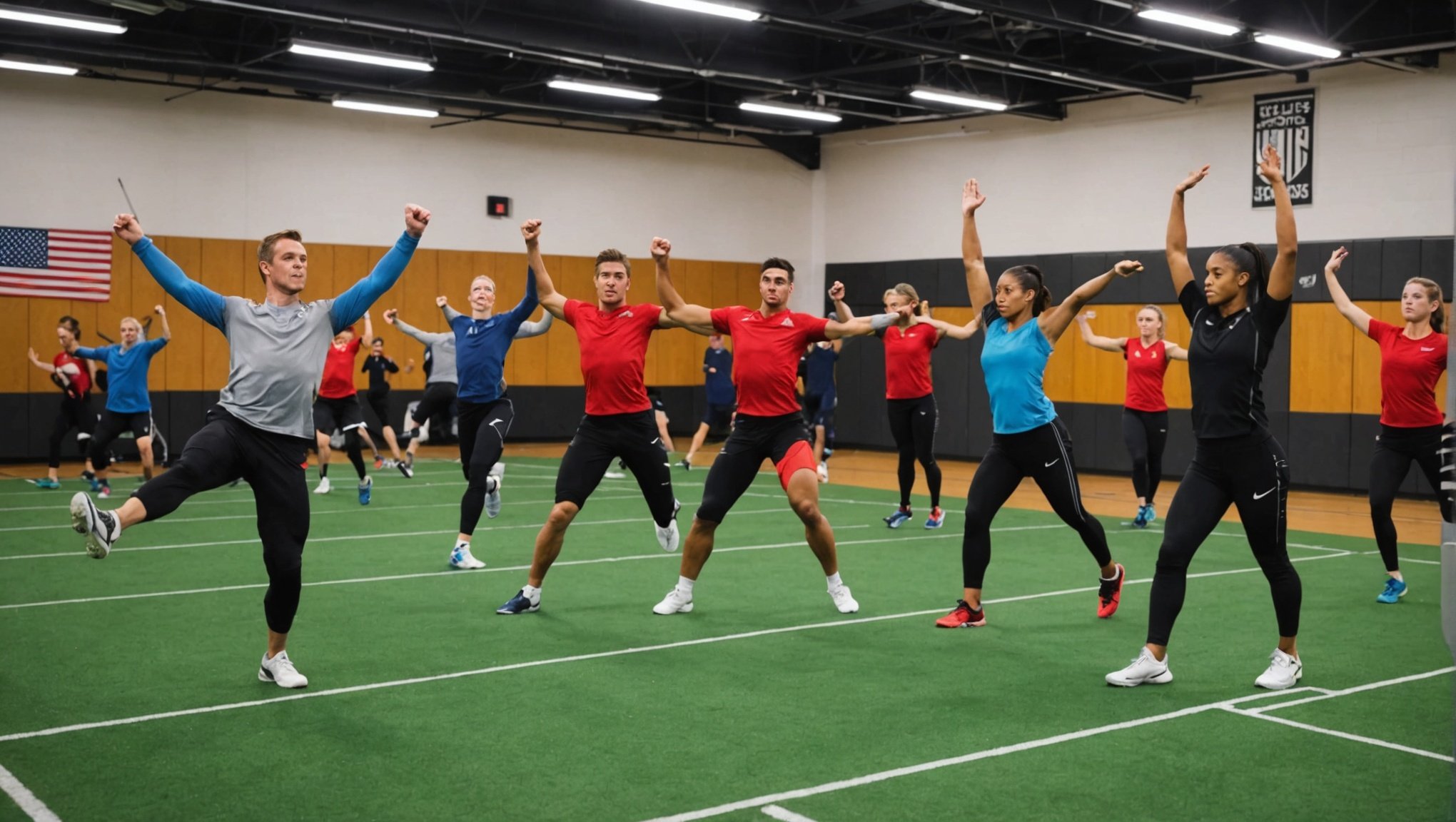Unlocking Performance: The Power of Dynamic Stretching in Athletes’ Warm-Up Routines
When it comes to optimizing athletic performance and minimizing the risk of injury, few components of a workout routine are as crucial as the warm-up. Among the various techniques used in warm-ups, dynamic stretching stands out as a powerful tool that can significantly enhance an athlete’s preparation for physical activity. In this article, we will delve into the world of dynamic stretching, exploring its benefits, how it differs from static stretching, and how athletes can incorporate it into their training sessions.
The Benefits of Dynamic Stretching
Dynamic stretching is a series of movements that mimic the actions of the sport or exercise you are about to perform. Unlike static stretching, which involves holding a stretch for a period of time, dynamic stretching involves continuous movement.
Additional reading : Maximizing Cardiovascular Endurance: Cross-Training Strategies for Competitive Rowers
Injury Prevention
One of the primary benefits of dynamic stretching is its role in injury prevention. By increasing blood flow to the muscles and joints, dynamic stretching helps to reduce the risk of injury. For example, if you are a runner, performing high knees or butt kicks as part of your warm-up can help prepare your muscles for the impact and movement of running, thereby reducing the risk of strains and sprains.
Improved Performance
Dynamic stretching also plays a significant role in enhancing athletic performance. By activating the nervous system and increasing muscle temperature, dynamic stretches improve muscle contraction and reaction time. This means better speed, strength, and overall athletic performance. As coaches David Syvertsen and Sam Rhee emphasize, a well-crafted warm-up routine that includes dynamic stretching can elevate CrossFit performance and minimize injuries.
Also to read : Mastering the Art of Tapering: Essential Tips for Marathon Runners in the Final Week Before Race Day
Mental Preparation
In addition to physical benefits, dynamic stretching helps in mental preparation. Engaging in a dynamic warm-up routine can help athletes focus and get into the right mindset for their workout. It can also reduce stress and anxiety associated with exercise, making the transition into intense physical activity smoother.
How Dynamic Stretching Differs from Static Stretching
While both dynamic and static stretching are essential components of a fitness routine, they serve different purposes and are used at different times.
Dynamic Stretching
- Movement-Based: Dynamic stretches involve continuous movement that mimics the actions of the sport or exercise.
- Pre-Exercise: Typically performed before exercise to prepare the muscles and joints.
- Examples: Leg swings, arm circles, walking lunges, and high knees.
- Benefits: Increases blood flow, reduces risk of injury, improves performance, and prepares the nervous system.
Static Stretching
- Stationary: Static stretches involve holding a stretch for a period of time.
- Post-Exercise: Usually performed after exercise as part of the cool-down routine.
- Examples: Hamstring stretch, quadriceps stretch, and chest stretch.
- Benefits: Helps in recovery, reduces muscle soreness, and improves flexibility over time.
Incorporating Dynamic Stretching into Your Warm-Up Routine
To get the most out of dynamic stretching, it’s important to incorporate it thoughtfully into your warm-up routine.
Starting with Light Aerobic Exercises
Begin your warm-up with some light aerobic exercises such as jogging or brisk walking for about 5-10 minutes. This gets your blood flowing and warms up your muscles.
Dynamic Stretches
Follow the aerobic exercises with dynamic stretches that target the major muscle groups you will be using during your workout. Here are some examples:
- Leg Swings: Stand with your feet hip-width apart and swing one leg forward and backward, then switch to the other leg.
- Arm Circles: Hold your arms straight out to the sides and make small circles with your hands.
- Walking Lunges: Perform walking lunges to stretch your hips, legs, and lower back.
- High Knees: Run in place, bringing one knee up towards your chest while keeping the other foot on the ground.
Sport-Specific Warm-Up Exercises
Incorporate sport-specific warm-up exercises to mimic the movements and demands of your chosen activity. For instance, if you are a soccer player, you might perform shuttle runs or lateral shuffles to simulate the quick changes of direction in the game.
Practical Insights and Actionable Advice
Here are some practical tips to help you integrate dynamic stretching effectively into your training sessions:
Tailor Your Routine
- Specific Needs: Tailor your warm-up routine to your specific needs and the activities you engage in. If you have any underlying health conditions or specific concerns, consult with a healthcare professional or a qualified fitness instructor.
Duration and Intensity
- Duration: Aim for a warm-up routine that lasts about 10-15 minutes, including both light aerobic exercises and dynamic stretches.
- Intensity: Start with low-intensity movements and gradually increase the intensity as you progress through your warm-up.
Examples of Dynamic Stretching Routines
Here is an example of a dynamic stretching routine for a runner:
- Jogging or Brisk Walking: 5 minutes
- Leg Swings: 3 sets of 10 reps (front and back)
- High Knees: 3 sets of 10 reps
- Butt Kicks: 3 sets of 10 reps
- Walking Lunges: 3 sets of 10 reps (each leg)
Table: Comparing Dynamic and Static Stretching
| Characteristics | Dynamic Stretching | Static Stretching |
|---|---|---|
| Type of Movement | Continuous movement | Stationary |
| Timing | Pre-exercise | Post-exercise |
| Examples | Leg swings, arm circles, high knees | Hamstring stretch, quadriceps stretch |
| Benefits | Increases blood flow, reduces risk of injury, improves performance | Helps in recovery, reduces muscle soreness, improves flexibility |
| Purpose | Prepares muscles and joints for exercise | Aids in recovery and improves flexibility |
Quotes from Experts
- “A well-crafted warm-up routine that includes dynamic stretching can elevate CrossFit performance and minimize injuries.” – David Syvertsen and Sam Rhee.
- “Dynamic stretching helps activate the nervous system, which improves muscle contraction and reaction time.” – Eastside Ideal Health.
Dynamic stretching is a powerful tool in an athlete’s arsenal, offering a multitude of benefits that can enhance performance, prevent injuries, and promote overall fitness. By understanding the differences between dynamic and static stretching and incorporating dynamic stretches into your warm-up routine, you can optimize your training sessions and achieve better results.
Remember, a warm-up routine is not just about preparing your body physically; it also prepares your mind for the challenges ahead. So, take the time to prioritize dynamic stretching in your fitness regimen, and you will see a significant improvement in your athletic performance and overall well-being.











